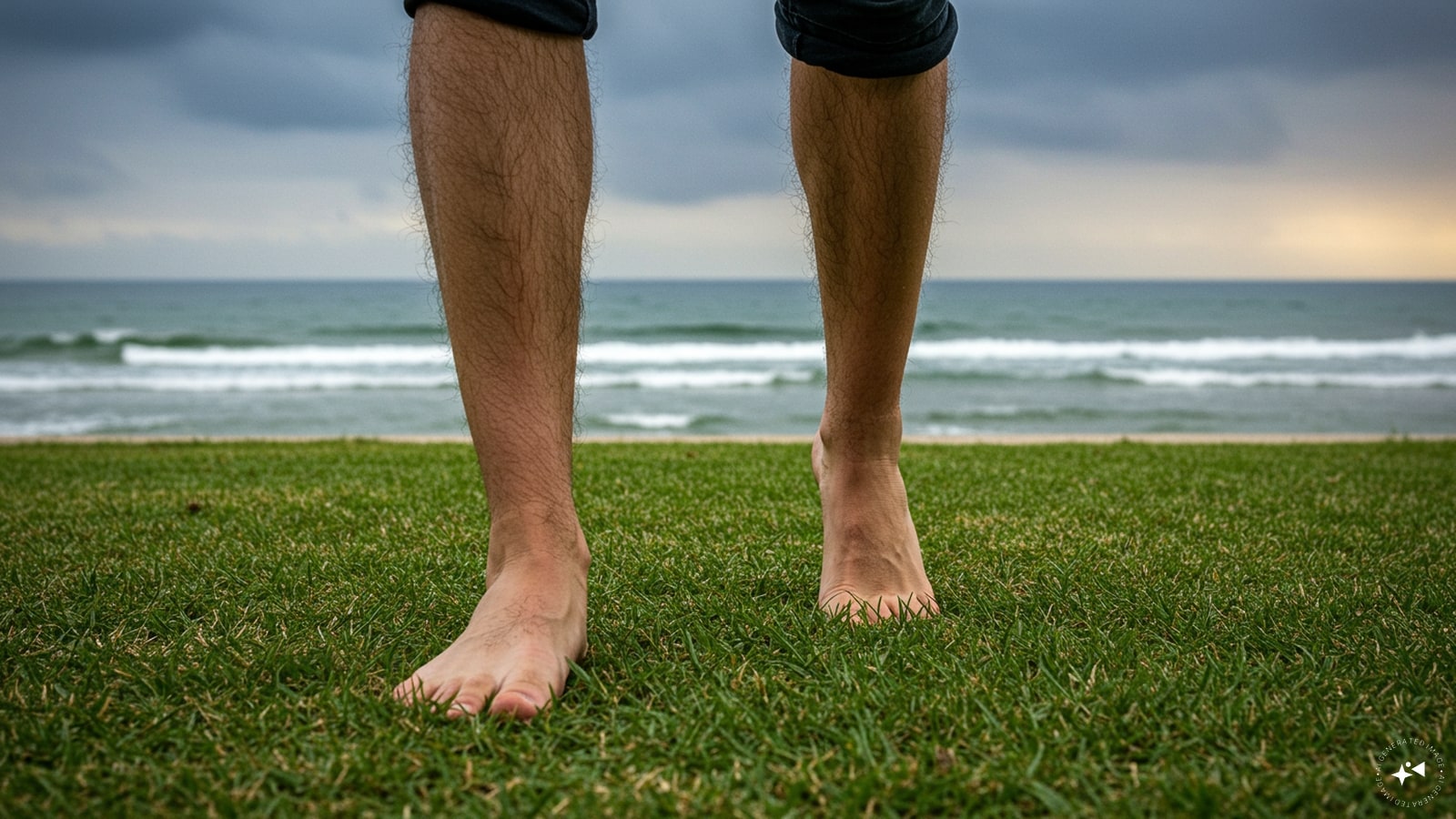Last Updated:
Discover how chronic foot pain affects your posture, knees, hips, and spine and learn expert-backed solutions to restore balance, mobility, and joint health.

Chronic foot pain can silently alter your posture and body alignment, leading to knee, hip, and back discomfort over time.
Chronic foot pain is often regarded as a problem restricted to one specific area of the body. However, once our feet begin to hurt, we tend to shift our weight to alleviate that discomfort, altering the body’s mechanics and throwing our posture out of balance. As this compensation continues over time, it becomes a major reason for straining areas such as the knees and hips, leading to further pain and dysfunction.
Dr Sagar Rakesh Tyagi, Nivaan Interventional Pain and Regenerative Medicine Clinic, explains five ways in which foot pain affects posture and joint health and how this chain can be broken before it completely takes over the body.
1. Altered Weight Distribution Wreaks Havoc on Knee Alignment
When you experience discomfort in your feet, you naturally shift your weight to minimise the pain. This leads to uneven loading on the knees, causing unnatural bending and excessive stress on either the inner or outer portion of the joint. Over time, this stress accelerates degeneration, increasing the risk of conditions such as patellofemoral pain syndrome or early-onset osteoarthritis.
Solution:
Use custom orthotics for proper arch support, and strengthen surrounding muscles with exercises such as step-downs and wall squats.
2. Hip Joint Dysfunction and Uneven Gait Patterns
When one foot hurts, you instinctively walk with a limp, altering your gait. This variation disrupts the natural mechanics of your hip joints. On the unaffected side, the hip may rotate or tilt abnormally, leading to muscular imbalances. Chronic hip joint dysfunction can cause pain similar to sciatica and increase the risk of labral tears.
Solution:
Engage in physiotherapy that focuses on pelvic realignment and hip mobility. Exercises like bridges and side leg raises help restore symmetrical movement patterns.
3. Postural Imbalance and Strain in the Lower Back
Foot pain often forces people to walk with a forward tilt, causing the head and shoulders to slump in compensation. This postural shift compresses the lumbar spine, resulting in lower back pain and muscle fatigue. The longer this misalignment persists, the harder it becomes to restore natural alignment.
Solution:
Consult a chiropractor or physiotherapist to identify postural deviations. Core-strengthening exercises and ergonomic adjustments to your sitting and standing posture can help realign the spine.
4. The Foot–Knee–Hip Connection
Foot pain often stems from underlying conditions such as:
Plantar Fasciitis: Inflammation of the plantar fascia, the thick band of tissue running along the bottom of the foot. It causes heel pain, especially in the morning or after long periods of sitting.
Achilles Tendonitis: Overuse or repetitive stress on the Achilles tendon leading to inflammation and pain at the back of the heel. Common among athletes and those engaging in high-impact activities.
Morton’s Neuroma: Thickening of the tissue around a nerve leading to the toes, often causing sharp, burning pain in the ball of the foot.
Solution:
Manage foot pain through a stretching program focused on the calf and Achilles tendon. Night splints, myofascial release therapy, and regenerative medicine can also provide long-term relief.
5. Reduced Mobility Increases the Risk of Joint Degeneration
Painful feet often lead to reduced mobility and a reluctance to stay active. However, physical activity is essential for maintaining joint health. Reduced movement weakens muscles, stiffens joints, and limits circulation, all of which increase the risk of degenerative joint diseases such as arthritis.
Solution:
Engage in low-impact exercises such as swimming or cycling, which support joint movement without aggravating foot pain. Incorporate mobility drills and stretching to keep joints supple and prevent stiffness.
The Way Forward: Breaking the Pain–Posture Cycle
Foot pain often triggers a cascade that disrupts the body’s natural alignment. Addressing the root cause early on is key to breaking this cycle before joint issues develop. Custom orthotics, physiotherapy, lifestyle modifications, and regenerative therapies can restore balance and function.
Healthy feet lay the foundation for good posture and pain-free movement. Being proactive and seeking timely intervention can restore balance before foot discomfort turns into a chronic joint problem.
To be mindful of how chronic foot pain affects your musculoskeletal system is to take the first step toward preventing deeper complications. The path to long-term joint health truly begins with your feet, so don’t ignore the signals they send.

Swati Chaturvedi, a seasoned media and journalism aficionado with over 10 years of expertise, is not just a storyteller; she’s a weaver of wit and wisdom in the digital landscape. As a key figure in News18 Engl…Read More
Swati Chaturvedi, a seasoned media and journalism aficionado with over 10 years of expertise, is not just a storyteller; she’s a weaver of wit and wisdom in the digital landscape. As a key figure in News18 Engl… Read More
October 18, 2025, 13:37 IST






